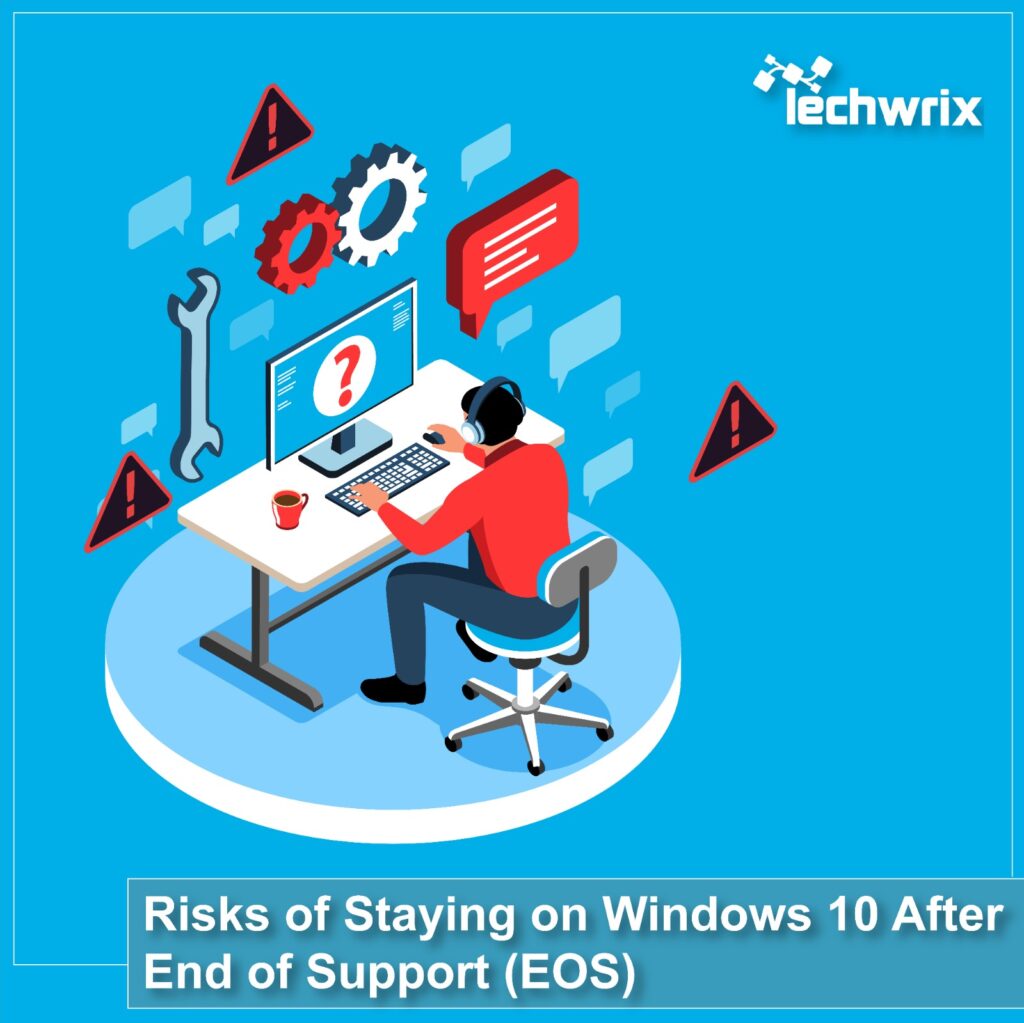Windows 10 has been a great operating system(OS) since its release on July 29, 2015 , that powers millions of PCs around the world. It is well known for its reliability and user-friendly design and has gone through multiple updates range from version 1507 to the final version 22H2.
However, Microsoft has officially announced that Windows 10 will reach its End of Support (EOS) on October 14, 2025.Even though it feels easier to work with a familiar system, using Windows 10 after EOS comes with serious risks specially for businesses that handle sensitive data and rely on stable infrastructure. In this article, we’ll explore the risks of staying on Windows 10 after support ends.
Impact of Windows 10 After EOS
When an operating system reaches EOS, it essentially becomes outdated in the eyes of the software provider. In Microsoft’s case, this means:
No more security patches: New vulnerabilities discovered after the EOS date will remain unpatched.
No bug fixes or updates: If you encounter performance issues or crashes, Microsoft will not resolve them.
No Technical support: Microsoft’s custom support team will no longer help you running Windows 10.
This marks a clear line between a supported and unsupported system and the old version puts your systems at risk.
Also Read: Windows 11 24H2: A Guide to New Features and Rollout
Risks of Using Windows 10 After EOS
As soon as Microsoft discontinues updates and security patches for an operating system, it becomes an attractive target for cybercriminals and hackers.
Increased Security Vulnerabilities
One of the most pressing dangers of using an unsupported OS is exposure to cybersecurity threats. Without regular security updates, your system is left vulnerable to viruses, ransomware, phishing attacks, and zero-day exploits. Hackers often target older systems because they know the security flaws won’t be fixed.
For organizations, this means put your customer data, financial records, and internal operations at risk. A single breach can result in reputation damage, legal consequences, and financial loss.
Compliance and Regulatory Issues
Many industries such as healthcare, finance, and e-commerce must follow strict data protection regulations like GDPR, HIPAA, or PCI DSS. Running an unsupported operating system could mean failing to meet these standards, even if your other security measures are strong.
Non-compliance could result in fines, legal penalties, or disqualification from contracts that require up-to-date infrastructure.
Software Compatibility Problems
As software companies release new versions of their apps, they might stop making them work on older systems.This means your organization might not be able to use the latest versions of important tools like office software, security programs, and other business apps. Many software companies are now focusing on Windows 11, so if you’re still using Windows 10, you could miss out on new features, updates, and security improvements.
Hardware Driver Limitations
Modern hardware components such as latest CPUs, GPUs, and other devices are made to work best with Windows 11. If you keep using Windows 10, you might face problems like slower performance, driver issues, or system instability. It can also be harder to upgrade your hardware, which may force your organization to use expensive or less effective solutions.
Higher Maintenance and Operational Costs
Operating an outdated, unsupported system always leads to downtime. After EOS, IT teams will no longer have access to official Microsoft support or assistance for troubleshooting issues related to Windows 10. Microsoft may offer extended support for enterprises that want to continue using Windows 10 post-EOS. If they offer these support it comes at a higher price. Also, you might need special fixes and temporary solutions to keep important systems working, which can use up a lot of time and resources.This means that if something goes wrong, IT staff will have to rely on their own expertise or third-party solutions, Microsoft will not be responsible for anything.
Real-World Case Studies
History has shown that unsupported systems pose real risks. For example, On May 12, 2017 WannaCry ransomware attack exploited a vulnerability in outdated Windows systems, crippling hospitals, businesses, and government agencies worldwide.
Many of the affected organizations were still using Windows XP, an OS that was long past its EOS. The cost of inaction causes serious damage.
Similar risks apply to Windows 10 after Oct 2025. As support ends, attackers will be watching for opportunities to exploit systems that haven’t transitioned.
Also Read: 3 Methods to Upgrading to Windows 11: A Step-by-Step Guide
Conclusion
Staying on Windows 10 after its End of Support might seem like a short-term convenience, but it opens the door to serious long-term risks. From increased vulnerability to cyber threats and compliance issues to software limitations and higher maintenance costs the consequences can be significant.
Upgrading to a supported operating system Windows 11 ensures your systems remain secure, compliant, and ready for future demands. To get started, check out: A step-by-step guide to upgrade Windows 11. The best time to plan your transition is now, before it’s too late.

